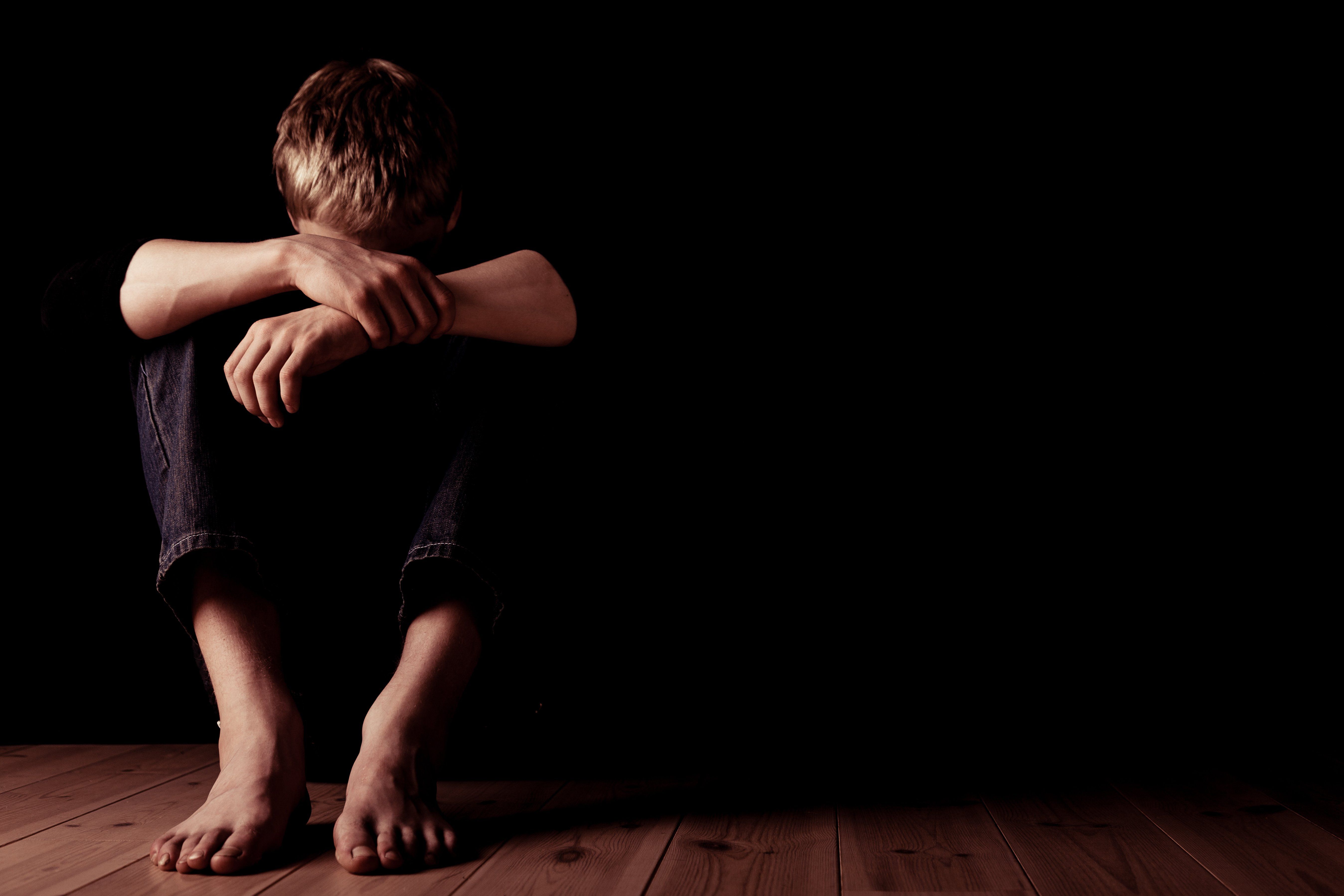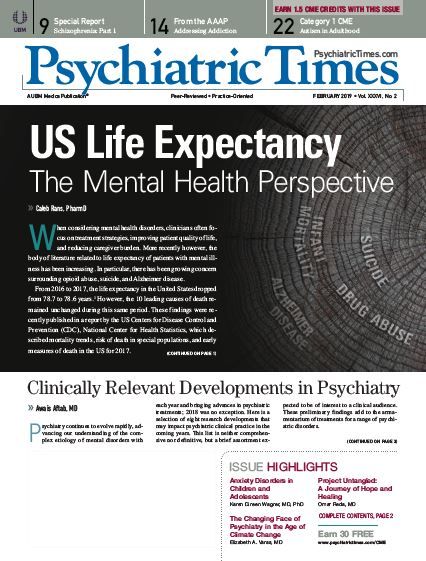Anxiety Disorders in Children and Adolescents: New Findings
Recent studies and meta-analyses discussed here address mental health hospitalization, optimal treatment, and long-term outcome for children and adolescents with anxiety disorders.
JanHAndersen/AdobeStock

Anxiety disorders are the most common psychiatric condition in youth. Lifetime prevalence rates for any anxiety disorder in adolescents is 31.9%.1Anxiety disorders occur early in childhood with a median age of onset of 6 years. These disorders lead to significant impairment in academic, social, and family functioning. In clinical practice, it is common to see children who are homeschooled because of severe untreated anxiety disorders. Untreated anxiety disorders may also be a precursor for MDD. There have been some recent studies and meta-analyses that address mental health hospitalization, optimal treatment, and long-term outcome for children and adolescents with anxiety disorders.
Mental health hospitalization
In a recent study, Bushnell and colleagues2 examined the incidence of mental health-related hospitalization, treatment for self-harm, and emergency room visits in children and adolescents who had a new diagnosis of an anxiety disorder. The sample included 198,450 youths aged 3 to 17 years who were included in the MarketScan claims database that contains health plan data for those covered by employer-sponsored private health insurance across the US. Youths were followed for up to 2 years after diagnosis of an anxiety disorder, and youths without anxiety diagnoses were included as comparators.
The median age of the youths with anxiety disorders was 12 years old and 55% were female. The incidence of new anxiety diagnoses were as follows: unspecified anxiety disorder (53%), generalized anxiety disorder (25%), obsessive-compulsive disorder (5%), and posttraumatic stress disorder (4%). Within a one-year period from diagnosis, 2% of these youths had a mental-health related hospitalization, 1% had a recorded suicidal ideation claim, and .08% had inpatient treated self-harm. Emergency room visits were high (20%), and 1.4% had an anxiety-related emergency room visit within one year of a new anxiety disorder diagnosis. The two-year incidence of these events was similar.
Rates of these events were highest in older children with baseline comorbid depression. Rates were lower in the comparator group (mental health-related hospitalization 0.5%, treated self-harm 0.01%, and emergency room visits 13%). Findings from this study further demonstrate the significant adverse effects of anxiety disorders in children and adolescents.
Antidepressant treatment
Strawn and colleagues3 examined the magnitude of antidepressant response and the effect of antidepressant class and dose on improvement in pediatric anxiety disorders. The anxiety disorders included generalized anxiety disorder, social anxiety disorder, and separation anxiety disorder. Data were obtained from 9 trials of antidepressant medications, which included 5 SSRIs and 4 SNRIs for 1673 youths with anxiety disorders who were randomly assigned to an antidepressant or placebo. The median duration of the treatment was 10 weeks. The SSRIs included fluoxetine, fluvoxamine, paroxetine, and sertraline. SNRIs included atomoxetine, venlafaxine, and duloxetine.
By week 2 there were statistically significant differences between medication and placebo, and by week 6 there were clinically significant treatment differences between antidepressant medication and placebo. There were also class differences in effectiveness between SSRIs and SNRIs. Compared with SNRIs, SSRIs showed significantly greater improvement by the second week of treatment, which was maintained through week 12.
There was no difference in response over time between high- and low-dose SSRI treatment; however high dose resulted in statistically significant improvement earlier (week 2) compared with low dose. The results of this study demonstrate that response occurs early with antidepressant treatment of pediatric anxiety disorders and that SSRIs have earlier and greater efficacy than SNRIs for the treatment of children and adolescents with generalized anxiety disorder, social anxiety disorder, and separation anxiety disorder.
Psychotherapy
A meta-analysis was undertaken to compare different types of psychotherapies for the treatment of children and adolescents with anxiety disorders.4 The study comprised 101 randomized clinical trials with a total of 6625 patients in the analyses. There were 11 different psychotherapies including:
• Group behavioral therapy (BT)
• Individual and group BT
• Individual BT with parental involvement
• Group cognitive behavioral therapy (CBT)
• Group CBT with parental involvement
• Individual CBT
• Individual and group CBT
• Individual CBT with parental involvement
• Internet-assisted CBT
• Parent-only CBT
• Bibliotherapy CBT
The 4 control conditions included wait list, psychological placebo, no treatment, and treatment as usual.
All of the psychotherapies were found to be more effective than the wait list control. Of all of the therapies, only group CBT was significantly more effective in treating anxiety symptoms than the other psychotherapies or the control conditions at both posttreatment and at short-term follow up (the median duration of acute treatment was 12 weeks and the longest follow up was 6 months). Based on these findings, the researchers suggest that group CBT may be the initial treatment for youth with anxiety disorders; however these findings require further research.
Long-term outcome
The Child/Adolescent Anxiety Multimodal Extended Long-Term Study provides information about long-term outcome for youths who received acute (12 week) treatment for pediatric anxiety disorders.5 The study included 319 children and adolescents with separation anxiety disorder, social anxiety disorder, and/or generalized anxiety disorder. Study participants were randomized to either 12 weeks of sertraline, CBT, sertraline plus CBT, or placebo. They were assessed annually over 4 years.
Across all 4 years, 21.7% of youth were in stable remission, 30% were chronically ill, and 48% relapsed. Those youths who responded to acute treatment were more likely to be in remission during the course of the follow-up. There was no association between the initial treatment group and remission status. These findings indicate that anxiety disorders in children and adolescents are often chronic and may require longer-term or intermittent treatment beyond acute treatment.
Disclosures:
Dr Wagner is Professor and Chair, Department of Psychiatry and Behavioral Sciences, University of Texas Medical Branch, Galveston, TX. She is President of the American Academy of Child and Adolescent Psychiatry.
References:
1. Merikangas KR, He JP, Burstein M, et al. Lifetime prevalence of mental disorders in US adolescents: results from the National Comorbidity Survey Replication-Adolescent Supplement (NCS-A). J Am Acad Child Adol Psychiatry. 2010;49:980-989.
2. Bushnell GA, Gaynes BN, Compton, SN, et al. Incidence of mental health hospitalizations, treated self-harm, and emergency room visits following new anxiety disorder diagnoses in privately insured US children. Depress Anxiety. October 24, 2018; E-pub ahead of print.
3. Strawn JR, Mills JA, Sauley BA, et al. The impact of antidepressant dose and class on treatment response in pediatric anxiety disorders: a meta-analysis. J Am Acad Child Adol Psychiatry. 2018;57:235-244.
4. Zhou X, Zhang Y, Furukawa TA, et al. Different types and acceptability of psychotherapies for acute anxiety disorders in children and adolescents: a network meta-analysis. JAMA Psychiatry. 2018:e1-e10.
5. Ginsburg GS, Becker-Haimes EM, Keeton C, et al. Results from the Child/Adolescent Anxiety Multimodal Extended Long-Term Study (CAMELS): primary anxiety outcomes. J Am Acad Child Adol Psychiatry. 2018;57:471-480.

